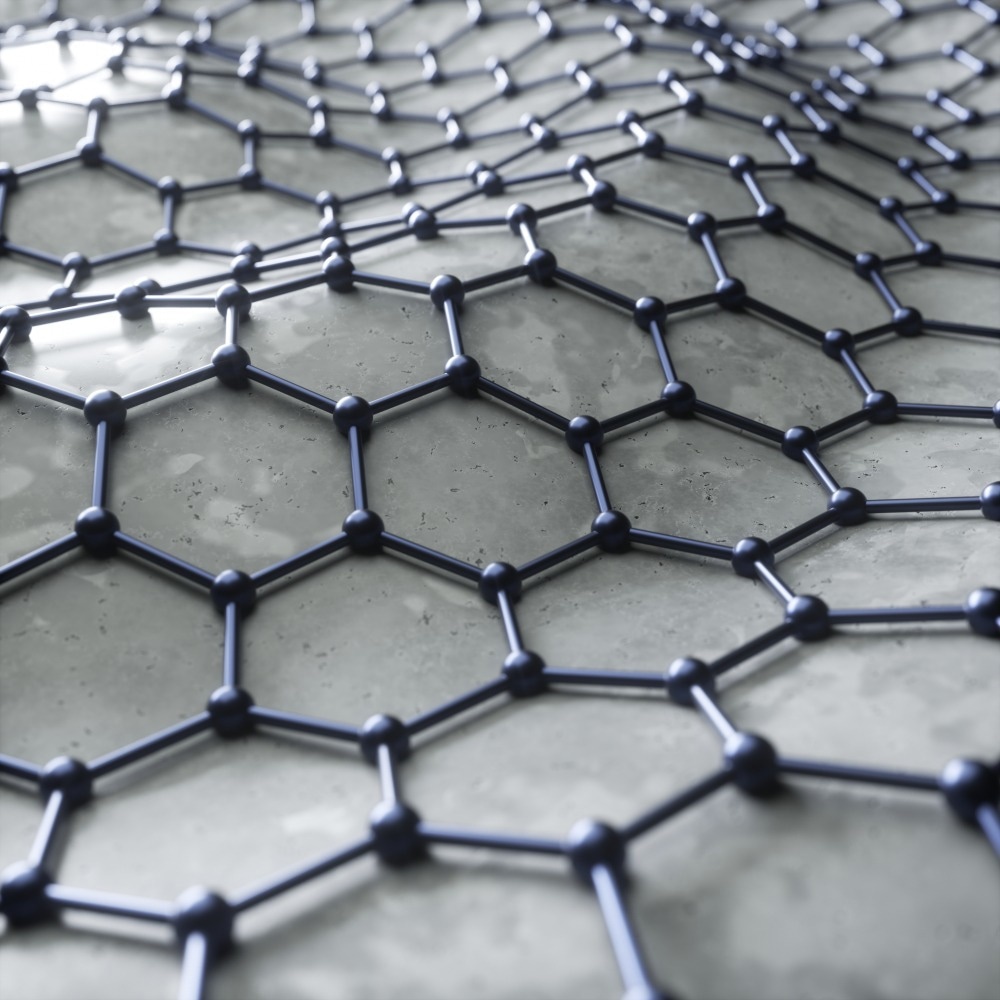Modern building and urban infrastructure construction are among the largest consumers of raw materials globally, with cement and concrete manufacturing alone responsible for approximately 8% of the anthropogenic CO2 emissions globally.

Image Credit: Evannovostro/Shutterstock.com
Such an environmental impact calls for urgent development and adoption of low-carbon footprint concrete in the construction industry. Recently, UK scientists from Concrene Ltd., a spin-off from the University of Exeter, and the University of Manchester’s Graphene Engineering Innovation Centre have discovered a way of incorporating graphene into concrete, thus increasing the material's strength and water resistance. More importantly, the graphene additive reduces the cement content of the concrete by up to 50% and can eliminate the need for steel reinforcement.
With population growth, increased urbanization, and improved living standards, the global demand for concrete products continues to grow at an accelerating rate.
Over the past 30 years, concrete usage increased exponentially owing to the versatility, affordability, and durability of concrete buildings and structures. Worldwide, approximately 30 billion tons of concrete are used annually, a 300% increase compared to 40 years ago. The demand for concrete is vastly outpacing that for other construction materials, such as steel and wood.
However, concrete has an enormous carbon footprint even when compared to other high-polluting industries, like iron and steel or oil and gas manufacturing. At least 8% of global greenhouse gas emissions are directly related to the cement industry.
Environmental Impact of Concrete Production
Concrete is manufactured by mixing sand, gravel, and cement with water and pouring the mixture into molds before it solidifies. Cement production involves heating a mixture of crushed minerals (limestone and clay) to a temperature above 1400 °C in a kiln by burning fossil fuels, resulting in the so-called clinker.
Additionally, the chemical reaction taking place during the clinker formation, that is, the conversion of limestone (or calcium carbonate, CaCO3) into calcium silicate (Ca2SiO4), releases approximately 600 kilograms of CO2 for every ton of cement produced. Clinker is the key bonding agent in cement that provides concrete's structural integrity.
In recent years, cement manufacturers teamed up with researchers and engineers to lower the construction industry's carbon footprint by investigating the possibilities of using low-clicker content cement in concrete production. Replacing some of the clinker with supplementary cementitious materials (SCMs), including byproducts such as fly ash, blast furnace slag, and others, can partially negate cement's environmental impact.
However, the longstanding problem is that most SCMs do not provide the same binding characteristics as clinker, meaning concrete made from low-clinker content cement has unsatisfactory performance in many applications.
Graphene Replaces Clinker
Since the discovery of graphene, several researchers have studied the influence of graphene additives on the properties of cement-based materials. Graphene is a 2D material consisting of monoatomic sheets of carbon atoms bonded in a repeating hexagonal pattern. The lightweight material exhibits intriguing properties, such as superior electrical and thermal conductivity, outstanding tensile strength (200 times stronger than steel), and flexibility.
A breakthrough came in 2014 when researchers from the University of Exeter discovered a way of uniformly dispersing graphene nanoparticles in aqueous media (pristine graphene is hydrophobic, thus non-miscible with water). Further development of the idea led to the concept of graphene-concrete composites.
The Exeter team demonstrated that the addition of 0.03%w/w of multi-layer graphene suspension to concrete resulted in a substantial increase in the material's compressive and flexural strength.

Image Credit: OliveTree/Shutterstock.com
Graphene-Concrete Composite Materials with Enhanced Properties
Moreover, the researchers reported that the graphene additive could decrease by up to 50% the required amount of cement without compromising the structural integrity of the graphene-concrete composite, thus substantially reducing the carbon footprint of the material. A spin-off company formed in 2018 from the University of Exeter, called Concrene Ltd., continues to develop methods for large-scale industrial production of graphene-cement additives for concrete products that are four times less water permeable and 25% stronger than traditional concrete.
At the same time, the leading Australian graphene manufacturer First Graphene Ltd. developed a wide range of graphene-based additives branded PureGRAPH. In particular, PureGRAPH AQUA can be easily dispersed into water and polar solvent-based formulations, which makes it particularly suitable for cement and concrete applications.
Additions as low as 0.01%w/w of the total concrete weight enhance the material's strength, durability, and functionality and enable the fabrication of slimmer, lighter concrete products with improved mechanical strength and reduced carbon footprint.
Graphene Cement Promises Cost Savings
In 2021, a joint venture formed between the UK-based Nationwide Engineering Research and Development (NERD) and the University of Manchester’s Graphene Engineering Innovation Centre developed the Concretene - a graphene-enhanced concrete produced using an innovative graphene additive that can be dosed directly at the batching plant where the concrete is formulated.
Concretene is 30-50% stronger than standard RC30 concrete and does not require steel reinforcement, meaning significantly less material is needed to achieve the equivalent structural performance. Although the material is more expensive to produce (approximately 5% additional cost), the reduced amount of Concretene results in 10-20% overall cost saving for the end customer.
What Are the Benefits for the Construction Industry?
NERD's ongoing construction collaborations with Network Rail could help meet the Network Rail commitment to reduce CO2 emission by 11% over the next four years by expanding the use of Concretene in railway construction projects. A 30% reduction in material usage would make a significant difference in environmental impact and costs across a range of large-scale construction projects.
The company estimates that a roll-out of Concretene across the global construction industry supply chain has the potential of reducing worldwide greenhouse gas emissions by 2%.
References and Further Reading
Monteiro, P., Miller, S. & Horvath, A. (2017) Towards sustainable concrete. Nature Mater, 16, pp. 698–699. Available at: https://doi.org/10.1038/nmat4930
Dimov, D., et al. (2018) Ultrahigh Performance Nanoengineered Graphene–Concrete Composites for Multifunctional Applications. Adv. Funct. Mater. 28, p. 1705183. Available at: https://doi.org/10.1002/adfm.201705183
Ramsden, K. (2020) Cement and Concrete: The Environmental Impact. [Online] Princeton Student Climate Initiative. Available at: https://psci.princeton.edu/tips/2020/11/3/cement-and-concrete-the-environmental-impact
Lavars, N. (2021) World's first graphene-enhanced concrete slab poured in England. [Online] New Atlas. Available at: https://newatlas.com/materials/worlds-first-graphene-enhanced-concrete-slab
Sanderson, K. (2022) The path towards more-sustainable building construction. Nature, 611, pp. S18-S19 Available at: https://doi.org/10.1038/d41586-022-03650-3
Geschwindt, S. (2023) NERD secures £8m for graphene-enhanced concrete. [Online] Build in Digital. Available at: https://buildindigital.com/graphene-enhanced-concrete-concretene
Disclaimer: The views expressed here are those of the author expressed in their private capacity and do not necessarily represent the views of AZoM.com Limited T/A AZoNetwork the owner and operator of this website. This disclaimer forms part of the Terms and conditions of use of this website.